Affordable Greenhouses In Kenya
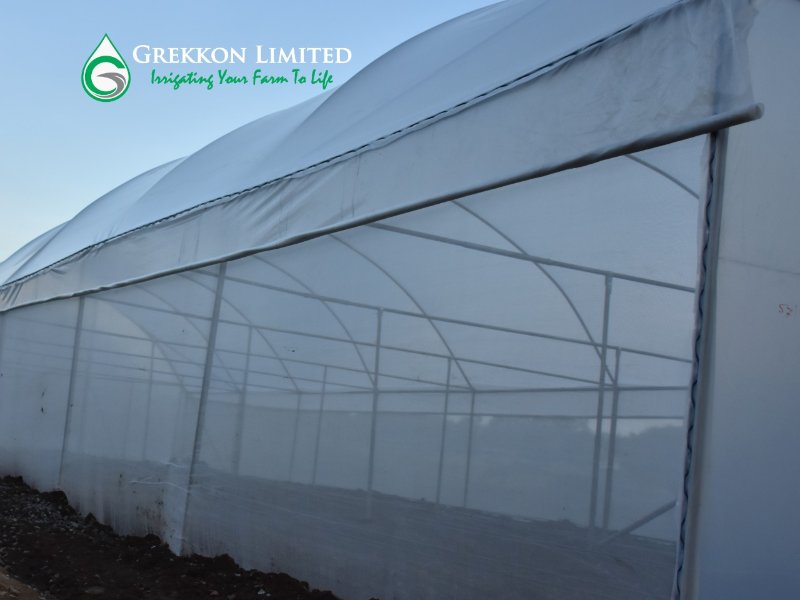
As a greenhouse company in Kenya, our affordable greenhouses in Kenya vary depending on the size, design, choice of crop, and the level of the steel frame treatment. In every project we undertake to create steel frame affordable greenhouses in Kenya, our price is pegged on these 3 considerations
- Size. Greenhouse sizes and prices are directly proportional. Our smallest economic greenhouse unit measures 15M x 8M. The largest is as per the farmer’s preference
- Design.
2.1. Tunnel type. These have a continuous curved roof to optimise warmth, and are built in cool highland locations. They are cheaper to construct

A tunnel type metallic greenhouse
2.2. Vented type. They have a ventilation on the roof to allow in cool air and avoid excess heat. These are constructed in hot, mid to low altitude locations. These are costlier to build
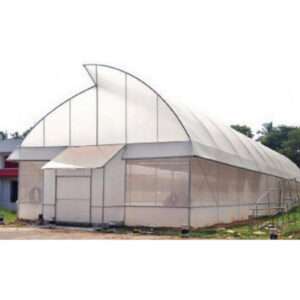
Vented type greenhouse
3. Choice of crop
There are;
3.1. Seedling propagation greenhouses which have racks to support seedling trays, and a misting system for high humidity
3.2. Vegetable greenhouses. Sweet peppers, chilies and tomato are grown here. They have a drip irrigation unit and metallic frame crop support stands in the greenhouse
3.3. Herbs, spices, strawberry, flower types and other short crops. They are no metallic frame crop support stands in these units, but there is a drip irrigation system
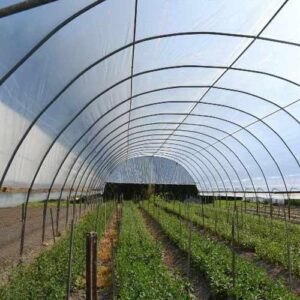
4. Level of steel treatment
4.1. Galvanised steel greenhouses. All greenhouse construction in Kenya by Grekkon Limited is with galvanised steel. This keeps the metal frame rust free to last for many years in use.
4.2. None-galvanised steel greenhouses. A coat of aluminum paint is applied on the steel surface to prevent rusting. This has to be done over it’s life time as the paint wears off. We do not use this steel treatment for our greenhouses
Affordable Greenhouses In Kenya
Greenhouses for sale in Kenya by Grekkon Limited.
| Greenhouse Type | ||||
| Tunnel Type | Open Ventilated Type | |||
| Greenhouse Size | 15M x 8M | 290,000 | 330,000 | |
| 20M x 8M | 300,000 | 340,000 | ||
| 24M x 8M | 320,000 | 350,000 | ||
| 30M x 8M | 460,000 | 540,000 | ||
| 40M x 8M | 575,000 | 655,000 | ||
| 15M x 16M | 460,000 | 555,000 | ||
| 24M x 16M | 620,000 | 665,000 | ||
| 30M x 16M | 900,000 | 990,000 | ||
| 40M x 16M | 1,100,000 | 1,240,000 | ||
The given cost of greenhouses in Kenya covers
- Drip Irrigation system complete with filtration system
- Entry pouch for disinfection,
- Sand, cement and ballast
- Insect netting for insect pest control and ventilation
- 200 microns (1,000 gauge ) greenhouse polythene cover
- Installation cost
What the client provides
- Tank
- Tank stand
Affordable Greenhouse Construction In Kenya
There are 3 key considerations:
I. Budget
- A galvanized steel greenhouse lasts longer and is more expensive than an aluminum paint coated one
- The steel internal cop support structure makes it costly but provides good mature crop support
II. Location
In the cool highlands, build a tunnel type to retain heat during the cold nights. In the warm lowlands, construct the vented type to moderately high temperatures during the day.
Vented type greenhouse is more expensive than tunnel types
III. Crop type
Mono color roses or other mono-color flowers will have yellow polythene covering. Multi-color flower crops and vegetables will have a clear polythene cover
Steps on greenhouse construction in Kenya
i. Choose your greenhouse size according to your budget
ii. Select your greenhouse type according to location
iii. Choose your polythene color according to your crop type
iv. Level the area where your greenhouse will stand
v. The 2 longer sides of the greenhouse will face eastwards and westwards. However, consider the wind direction too
vi. In the tropics, your greenhouse will be 5 meters tall or higher
Basic ‘Must Haves’ Treatments of a Greenhouse Polythene in Kenya
- It will be treated with anti-ultra violet (anti-UV) block to prevent the harmful UV sun rays from causing damage to the paper. Greenhouse polythene is made from polymers which photo-degrade easily under UV light exposure. The greenhouse paper changes color (yellowing), cracks, chalks on the surface which impairs transparency, and will have lower mechanical properties. Anti-UV treated paper lasts for a minimum of 36 months before replacement as a greenhouse cover. Without the treatment, the usable lifespan under equatorial climate is a few months. UV treatment reduces insect pest attacks such as; white flies, thrips, and aphids by making them less active. It controls some fungal diseases, thereby reducing overall pesticide application
Farmers growing crops that need external pollinators such as bees are advised to get a film that allows part of the UV light in. This is because these bees need it to move about

An illustration of UV damage on untreated polythene sheet over a 3 week period
- Anti-drip treatment. This prevents moisture condensation on the paper especially in the morning, otherwise known as ‘dew’. Dew droplets cause fungal disease growth when they fall on the crops leaf’s surface. In a solar dryer, dew on dried produce causes molding

Dew droplets on greenhouse crop foliage encourage formation of fungal diseases
How To Select The Right Greenhouse Cover For Your Crop
- Crop type
Different crop types have different light requirements
1.1. Fruiting type. Tomato, pepper, strawberry, cucumber require more light to make food to support fruiting. Have a clear polythene greenhouse cover for more light
1.2. Vegetative crops. Leafy vegetables, herbs and spices will produce well in less light than in 1.1. above. Clear or yellow polythene works
1.2. Mono color flowers. Yellow polythene intensifies petal color for mono color roses and other flowers. This increases their marketability
1.4. Bi or multi color flowers. Construct with clear polythene for with this crop
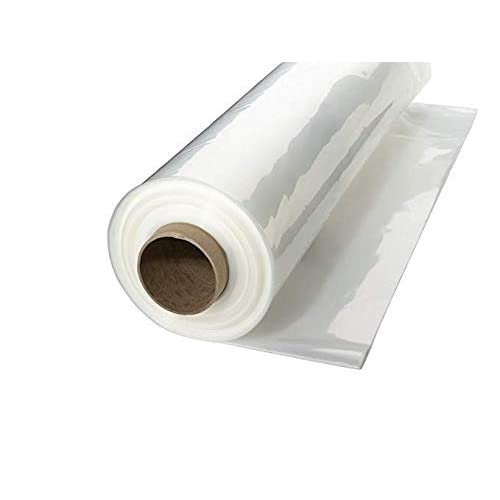
Clear greenhouse polythene
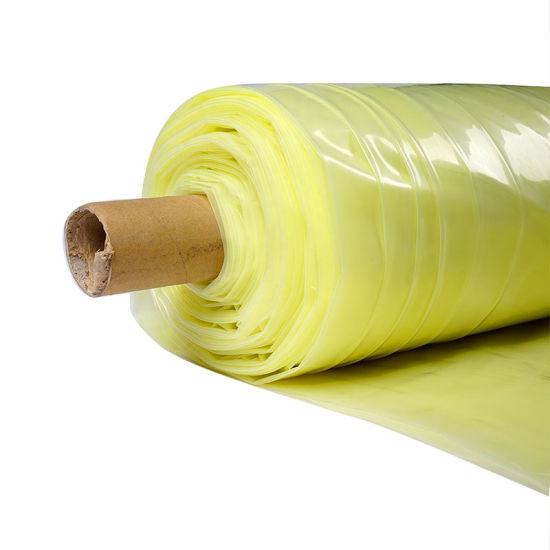
Yellow greenhouse polythene
2. Disease incidence
Crops such as; tomato, pepper, strawberry, cucumber, roses, carnations, chrysanthemums and many others are susceptible to blight. This is when moisture remains on their leaves. For such, your greenhouse polythene sheet will have anti-drip treatment. Anti drip treatment prevents dew droplets from forming on the paper when moisture condenses. These drops cause fungal infections when they drip on the leaf surface of the crop. Anti-drip treatment is available for both clear and yellow paper types
3. Budget
The anti-drip treated greenhouse polythene paper more expensive. However, it saves the grower more money, as a result of less fungicide application
The paper choice applies to any greenhouse structure; wooden or steel. This is true also for any greenhouse size
How to Choose Greenhouse Nets
Greenhouse nets allow for ventilation of the crops, and personnel working in the unit. Below are the consideration made when deciding the choice of greenhouse net to install on the sides
1. Crop type. Some crop types require higher light intensity than others. In this case, a lower shade % net is appropriate for the former. Fruiting crops such as; tomato, strawberry, capsicums, and so on require more light than leafy vegetables. Examples are; cabbage, spinach, collards, kale etc.
2. Crop stage of growth. The shade net in the nursery will block out more heat, than the one for established crops in the field
3. Location of the farm. In the highlands where the heat intensity is less, a lower shade net will protect crops well. In the mid to low altitudes where it’s hotter, a higher shade net works best.
4. Latitude. Countries such as Kenya lie along the equator where solar radiation is high. Your choice of greenhouse net will have higher UV treatment than that of a temperate region

Affordable Greenhouses In Kenya
FAQs
a. What materials are needed to build a greenhouse?
- UV treated greenhouse polythene
- Steel pipes
- Insect netting
- Profiles and wires
b. Can I grow year-round in a greenhouse?
Yes because the crop is protected from the elements of weather
c. Do greenhouses make money?
Yes they do with a high-value crop
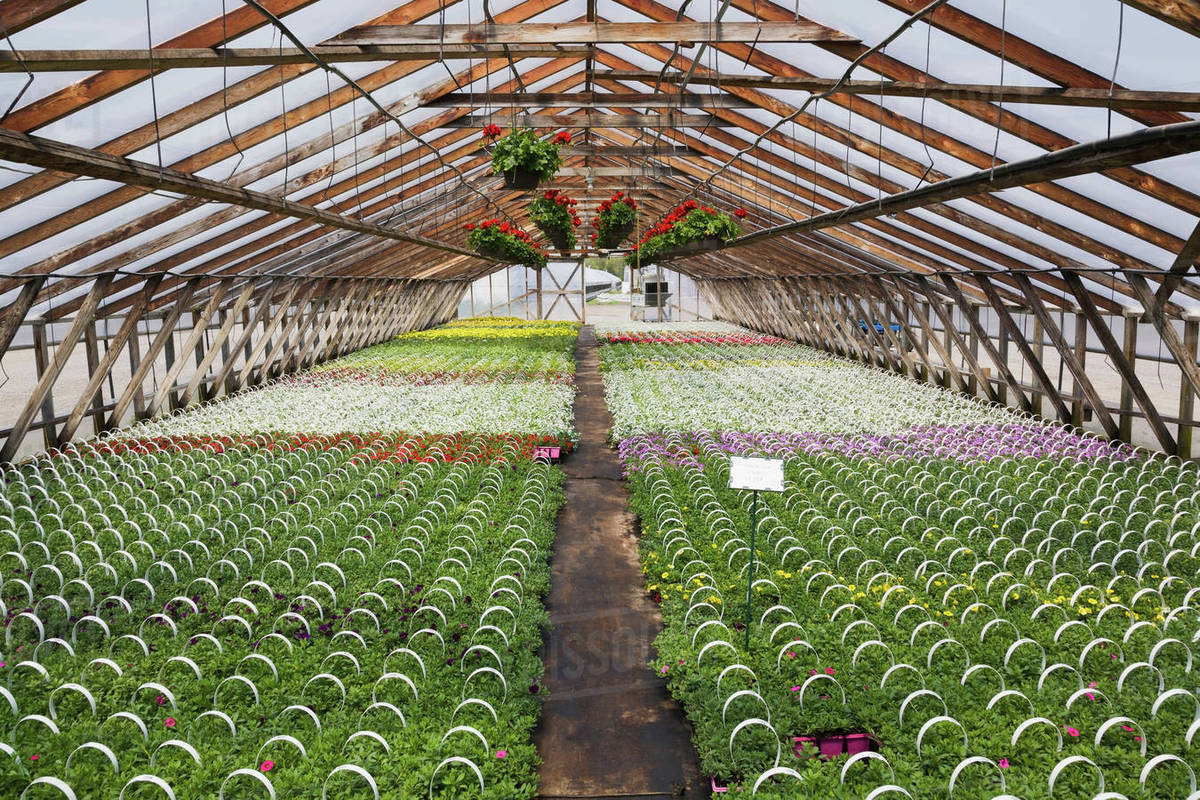
Growing herbs and spices in a wooden greenhouse
Related Posts
Greenhouse Construction In Kenya
Greenhouse construction in Kenya vary from small units of 120M sq, to large commercial units occupying ten of acres. The table below...

Greenhouse Paper In Kenya
Grekkon Limited's greenhouse paper in Kenya is of various rent characteristics. These characteristics determine it's overall performance on...
